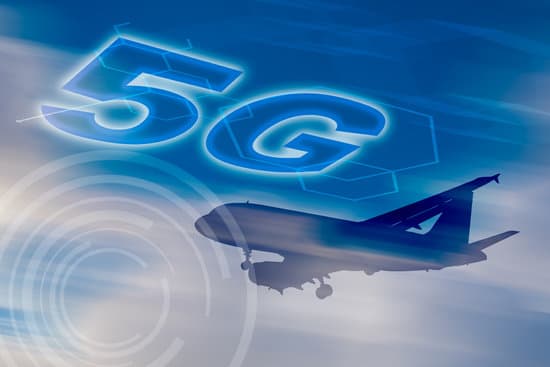Aviation Deadline to Retrofit Equipment for 5G Wireless Signals Quietly Arrives

The long-anticipated deadline for airlines to retrofit equipment to work with newer 5G wireless signals quietly passed on July 1 with very little fanfare.
“The July 1st deadline for passenger jets to upgrade their altimeters to address potential 5G interference has come and gone, and according to the Federal Aviation Administration (FAA), the aviation industry has seen "minimal disruption" as a result,” reported RCR Wireless News.
While the aviation industry scrambled to retrofit equipment, it asked the Biden administration to extend the July 1 deadline, but the government held firm on the date, causing some to worry about delays starting this month.
“Transportation Secretary Pete Buttigieg is warning of the potential for air-travel disruption ahead of a deadline for airlines to retrofit equipment to avoid potential interference from 5G wireless signals,” The Wall Street Journal reported in June. “Aircraft that haven’t gone through the necessary equipment changes won’t be cleared to land in certain weather conditions when visibility is low starting July 1, when U.S. wireless companies plan to boost their 5G service to higher power levels.”
Impact May Not be Felt Until Low Visibility Conditions
The Wall Street Journal went on to say that the severity of the potential impact is difficult to predict, as it depends on weather, which is why the U.S. government was urging airlines to speed up installations before low visibility conditions become more prevalent.
“Some airlines said they don’t expect problems: Most or all of their planes now have the updated equipment, or they expect to be able to plan around any restrictions for those that don’t,” The Wall Street Journal reported.
Flying magazine also contacted the airlines and found that most had completed the equipment upgrade prior to the July 1 deadline:
- All of American’s mainline in-service aircraft retrofits are complete, and we expect no operational impact,” American Airlines said in a statement.
- United Airlines also expects to have its mainline fleet fully retrofitted by the deadline.
- Alaska Airlines completed upgraded radio altimeter modifications on all its Alaska and Horizon aircraft in June “ahead of the FAA’s July 1 deadline,” the airline told FLYING.
- Carriers that have not yet finished the updates on their entire fleet, such as Delta Air Lines, will be turning to operational restrictions until they do.
“U.S. domestic and international fleets are largely equipped to operate in a 5G C-Band environment,” the FAA told RCR Wireless News via email. “The FAA is working with manufacturers and airlines to the extent possible to safely enable operations in cases where retrofits have not been completed.”
The FAA further confirmed that more than 85 percent of the domestic commercial airline fleet and about 66 percent of the international fleet are equipped with radio altimeters that can operate safely in the U.S. 5G C-band environment.
The 5G Aviation Safety Issue Has Been Around Since 2020
Flying magazine said airline industry officials have voiced concerns that interference caused by 5G signals could possibly compromise radio altimeters aboard airliners, which can constitute a safety hazard in low-visibility situations, since 2020.
“Data supplied by radio altimeters gives the pilot information about the aircraft height above terrain and supplies information for several other systems aboard sophisticated aircraft used by airlines. When this data is suspect, the aircraft cannot land,” Flying explained.
OEMs such as Airbus, Boeing, Embraer, and Mitsubishi Heavy have been working with radio altimeter manufacturers to develop and test filters and installation kits for their aircraft.
“The kits are installed at the respective airline maintenance facilities, however, airlines have reported that supply chain challenges are making it difficult to meet the proposed deadlines for 5G activation,” Flying reported. “As a stopgap measure, in January 2022 the wireless companies agreed to voluntarily reduce the power of the 5G towers near airports to help protect air traffic while the industry focused on developing protection for altimeters and later retrofitting the aircraft against interference.”
The FAA airworthiness directive (AD) issued in January requires passenger and cargo aircraft in the U.S. to be equipped with 5G C-Band tolerant altimeters or appropriate radio frequency filters by February 2024.
“Although that work continues at an expedient clip, this proposed AD would make the retrofits mandatory for operators that have not completed the work,” FAA said. “In keeping with the deadline agreed to by wireless carriers, the proposed AD also requires aviation operators to revise their airplane flight manuals to prohibit low-visibility landings after June 30, 2023, unless the retrofits have been completed on that airplane.”
What the FAA Says About 5G and Aviation Safety
The FAA is working to ensure that radio signals from newly activated wireless telecommunications systems can coexist safely with flight operations in the United States, with input from the aviation sector and telecommunications industry.
The FAA says that:
- The Safety Issue: Safety is our mission, and it guides all of our decisions. In the United States, 5G services launched in 46 markets on January 19, using frequencies in a radio spectrum called the C-band. These frequencies can be close to those used by radio altimeters, an important piece of safety equipment in aircraft. To make sure that this does not lead to hazardous interference, the FAA requires that radio altimeters are accurate and reliable.
- Disruption Risk to Aviation from 5G: Because the proposed 5G deployment involves a new combination of power levels, frequencies, proximity to flight operations, and other factors, the FAA must impose restrictions on flight operations using certain types of radio altimeter equipment close to antennas in 5G networks. These safety restrictions could affect flight schedules and operations. The FAA continues to work every day to reduce the effects of this disruption as we make progress to safely integrate 5G and aviation.
- Airports with Low-Visibility Landings in 5G Deployment Reaches 100 percent: The FAA map tracking airports with low-visibility landings in 5G deployment is now green across the nation with 100 percent of airports now having greater than 90 percent of aircraft models available to land.
FAA Questions and Answers on 5G and Aviation
The FAA has released the following Q&A surrounding 5G and aviation:
- I’ve heard about 5G already being deployed in other countries, such as France and Japan, with no issues. Why would the U.S. be different? The U.S. airspace is the most complex in the world, and the FAA holds us and our aviation sector to the highest safety standards. Deployments of 5G technology in other countries often involve different conditions than those proposed for the U.S., including:
o Lower power levels.
o Antennas adjusted to reduce potential interference to flights.
o Different placement of antennas relative to airfields.
o Frequencies with different proximity to frequencies used by aviation equipment.
- NOTAMs, AMOCs. The FAA uses many acronyms. Translate for me.
o NOTAM stands for Notice to Air Missions. They provide information on restrictions or procedures that pilots and others need to follow.
o AMOC stands for Alternative Method of Compliance. The AMOC process allows operators or manufacturers to demonstrate alternative ways to mitigate an unsafe situation. This process is used to clear altimeters that have been proven to be reliable and accurate in certain high-powered 5G environments.
- What are radio altimeters? Radio altimeters provide highly accurate information about an aircraft’s height above the ground. Data from these radio altimeters informs other safety equipment on the plane, including navigation instruments, terrain awareness, and collision-avoidance systems.
- The FAA says 5G “may” cause interference. So how do you know there’s a safety risk? Aviation in the U.S. is the safest in the world. That’s because we rely on data to mitigate risk, and never assume that a piece of equipment or a given flight scenario is safe until this can be demonstrated. If there’s the possibility of a risk to the flying public, we are obligated to restrict the relevant flight activity until we can prove it is safe.
- Why does an aircraft still need an approved altimeter if there is a bigger buffer now around airports? The FAA is working with manufacturers to determine which altimeters are accurate and reliable in the U.S. 5G deployment. The agency continues to review manufacturer testing data to determine how robust each model is.
- What about helicopters? The FAA allows air ambulance operators to continue using safety-enhancing night vision goggles in areas where the aircraft’s radio altimeter could be unreliable due to 5G C-band interference as identified by NOTAMs. Operators must comply with specific conditions and limitations. Like commercial aircraft, helicopters can perform day and night operations that do not require the use of a radio altimeter.
- Why haven’t the NOTAMs gone away? The wireless companies' actions reduce the amount of 5G around airports, but do not fully eliminate it. The NOTAMs let pilots and others know that there is 5G present. Restrictions in a NOTAM do not apply if an aircraft has an approved altimeter to operate. Since some aircraft still do not have an approved altimeter, the restrictions outlined in the NOTAM still apply.
- Are the AMOCs you’ve issued going to remain in effect indefinitely? No. The AMOCs that we issued in advance of the rollout of 5G C-band will expire at the end of each month. That’s because the wireless carriers have towers that will go live at the beginning of each month as they build out their service.
- So AMOCs could change every month? Yes. We’re working with the wireless companies to get us tower activation information as early as possible so we can plan accordingly.
- Why are we only hearing about this now? The FAA, the aviation industry, telecommunications companies, and their regulators, have been discussing and weighing these interference concerns for years, in the U.S. and internationally. Recent dialogue has helped to establish information sharing between aviation and telecommunications sectors and newly agreed measures to reduce the risk of disruption, but these issues are ongoing and will not be resolved overnight.



